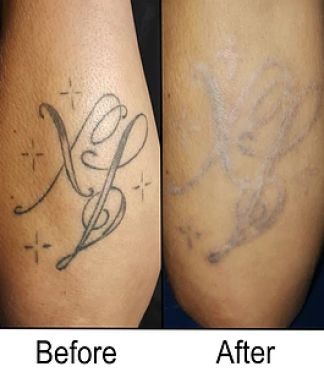Millions of American youngsters love for having one or more tattoos to represent them appealingly, showing love for their partner and feel unique. Nevertheless, with a change of outlook or situation, what feels a great idea for a time, often becomes a cause of regret later which is the key cause that drives people to seek a tattoo removal services. According to the best tattoo removal Miami that nearly 30% of their customers knock them to get rid of their so-called upsetting tattoos of different types.
So, whether you like to eliminate the cursive name tattoo of your loved one due to break up, change of trend or joining your professional life or anything, the market is now geared up with profuse tattoo removal approaches for you. To have an idea, among them three top popular methods are stated below:

Tattoo Removal Creams
As the most affordable tattoo removal option to commoners, creams of different brand names are selling like anything online nowadays. You’ll find top retail stores are in the race of selling creams of various companies suggesting people for repeated uses for ‘guaranteed result’. For convincing you about the results, the marketing groups show ‘before’ and ‘after’ pictures with photos, which are nothing but deceptive.
Therefore your great endeavor for removing tattoos spending nearly $50 – $60 per bottle will remain unachievable no matter how many bottles you use or years your loss. Understand logically, penetrating the dermis layer that absorbs tattoo inks thorough epidermis layer of the skin is unworkable for any cream and thus found practically useless.
Laser Tattoo Removal
The non-invasive removal procedure by the laser is rather scientific and thus has initially received an overwhelming market response. However, the aftereffect of laser beams in damaging skin has been a great cause of worry. In the procedure, a series of laser types are employed to eliminate a specific type of colors. Typically, white, black or darker inks can be somewhat removed using lasers, however, for lighter colors like green, yellow, or pink, removal of the ink is likely to be critical. Often the extent of success depends on one’s skin color, skin layer position, and ink color. In most cases, the number of laser sessions crosses even 20 to bring a moderate result.
Direct exposure to laser waves continually damages the surrounding tissues significantly causing permanent scarring. Instead of removing pigments, often dispersal of colors as well as driving them in a deep layer of the skin resulting in skin infection is a major negative side of laser tattoo removal. Thus, ending up with hypo-pigmentation or hyper-pigmentation, skin happens to be paler or darker than surrounding skin zone is a common experience. Depending on the type of tattoo you’ve, laser-based removal technique will require you to expend $100 to $500 per session, which is a high-cost alternative.
Non-Laser Tattoo Removal
Distinguishing it completely different from the above two tattoo removal approaches, the non-laser concept based de-inking process of tattoo removal in Miami has been a buzz in the industry. The most appealing and sensible part of the procedure involves simply the reverse manner of inking for effective and absolute removal of pigments irrespective of their color types. This makes tattoo removal in Miami 100% natural and permanent makeup of the skin with no or bare minimum damage of skin tone.
The Procedure
Following use of a local anesthetic, an advanced ink eraser gun is used to remove the pigments with great care. Remarkably, instead of pushing or dispersing the color tints, in the withdrawal of inks, the guns help to lift the colors near the skin surface or to its epidermal part. Then a special kind of solution is applied ideally formulated to break down and take the ink particles out of the body. The pigments normally appear over the skin as a coating, which falls off within a few days as the scab dries up and thus helps people to chuck out their most disappointing tattoos.
Tattoo Removal – Advantages
Natural and Safer
With no incision, no use of laser or toxic chemicals the natural undo-ink procedure has been proved absolute risk free and safer for human skin.
Fewer Treatments
Opposed to laser removal procedure that demands 10-20 costly treatment sessions, while tattoos are just faded but not removed completely or even disperse, the expert team of tattoo removal in Miami gets the things done requiring you to spend 50-75% fewer sessions.
Comprehensive Result
Unlike laser, de-inking non laser process absorbs and successfully removes every element of pigments from your skin. Once after healing, your skin will look normal and attractive again.
Affordable
Tattoo removal in Miami requires a fewer sitting for the complete result while its reasonably priced sessions make it affordable to the mass.